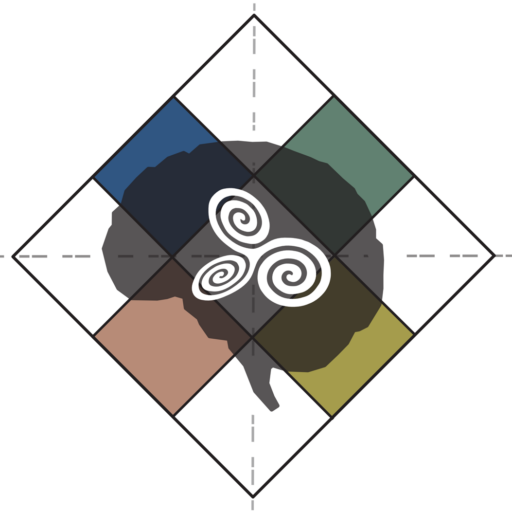Patchwork Labyrinth®
 Patchwork Labyrinth® is about brain trauma, but it is also about cognitive resilience and key discoveries made in neuroscience since the 1990s, and why you should care. The brain gets the lion’s share of research attention into human cognition, yet more than the head is involved in learning. Because thoughts are physical and not just chemical, movement fuels learning, too. Patchwork Labyrinth® explores how this is so, using my personal story with brain injury as its heart and then following branching pathways of scientific curiosity. There are dead ends; there is encouragement. It adds up to a compelling tale with a promising outlook.
Patchwork Labyrinth® is about brain trauma, but it is also about cognitive resilience and key discoveries made in neuroscience since the 1990s, and why you should care. The brain gets the lion’s share of research attention into human cognition, yet more than the head is involved in learning. Because thoughts are physical and not just chemical, movement fuels learning, too. Patchwork Labyrinth® explores how this is so, using my personal story with brain injury as its heart and then following branching pathways of scientific curiosity. There are dead ends; there is encouragement. It adds up to a compelling tale with a promising outlook.
For me, the story begins in 1993 when injuries from a car accident affected my abilities to read and write. Dreaming stopped, and my perceptions of color, space, and time changed. (Click to hear how improvement took months.) Some concussive symptoms did not get better, so I started tracking how different activities, environments, and food affect them. My training as a forest scientist gave me the patience and tools to look for patterns in what was happening to me and how it felt. Because a revolution was underway in brain science, I also paid close attention to advances in neurology, such as neuroplasticity, how the neurons in the human brain can change into adulthood, and the free-energy principle, the idea that perceptions and actions are reciprocal.
After nearly twenty years, new diagnostic tools helped doctors identify the origins of some of my ongoing symptoms, like amplified hearing and poor balance. In 2012, surgeons patched several tiny holes inside the bony labyrinth of my skull. As I convalesced, my earliest observations about healing from brain injury were reinforced: using my hands and feet repetitively–for crafting, walking, and writing –boost my learning and memory. By 2023, more neuroscientific discoveries are yielding evidence to explain why.
Questions? Contact me here.